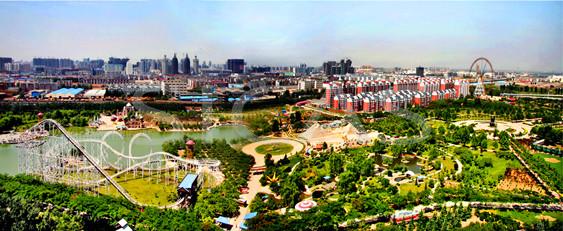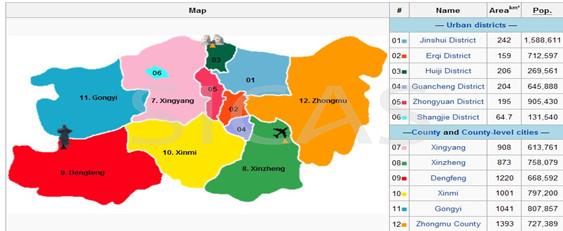 |
Zhengzhou is the capital and largest city of Henan province in north-central China. A prefecture-level city, it also serves as the political, economic, technological, and educational center of the province, as well as a major transportation hub for Central China. The city lies on the southern bank of the Yellow River, and is one of the Eight Great Ancient Capitals of China. Greater Zhengzhou was named as one of the 13 emerging megacities or megalopolises in China in a July 2012 report by the Economist Intelligence Unit. Zhengzhou is now a rapidly growing city.
City Impression >>one of the 13 emerging megacities or megalopolises in China>>one of the most important cities in inland China >>one of the major industrial cities in The People's Republic of China since 1949 >>the second largest city in central China
In 1903 the Beijing–Hankou Railway arrived at Zhengzhou, and in 1909 the first stage of the Longhai Railway gave it an east–west link to Kaifeng and Luoyang; it later was extended eastward to the coast at Lianyungang, Jiangsu, and westward to Xi'an (Chang'an), Shanxi, as well as to western Shaanxi. Zhengzhou thus became a major rail junction and a regional center for cotton, grain, peanuts, and other agricultural produce.
The municipality is home to 8,626,505 inhabitants (2010 census) and 3,980,250 in its built up area (6 urban districts + Xingyang City), making the city one of the main built-up areas of the province. It is estimated that the incoming workers to Zhengzhou city may double the population to about 15 millions.
Zhengzhou is situated at the transitional zone between the North China Plain to the east and the Song Mountains and Xionger Mountains to the west, which are part of the greater Qinling range. The city centre is situated to the south of the middle reach of the Yellow River, where its valley broadens into the great plain. Zhengzhou is at the crossing point of the north–south route skirting the Taihang Mountains and the mountains of western Henan. The prefecture spans 34° 16' ~ 34° 58 N latitude and 112° 42' ~ 114° 14' E longitude, covering a total area of 7,446.2 square kilometres , including the metropolitan area, which covers 1,013.3 km2 , and the city centre, which occupies 147.7 square kilometers. Zhengzhou experiences a monsoon-influenced, four-season humid subtropical climate, with cool, dry winters and hot, humid summers. Spring and autumn are dry and somewhat abbreviated transition periods. The city has an annual mean temperature of 14.35 °C (57.8 °F), with the monthly 24-hour average temperature ranging from 0.1 °C (32.2 °F) in January to 27.0 °C (80.6 °F) in July. The frost-free period lasts on average 220 days. |










